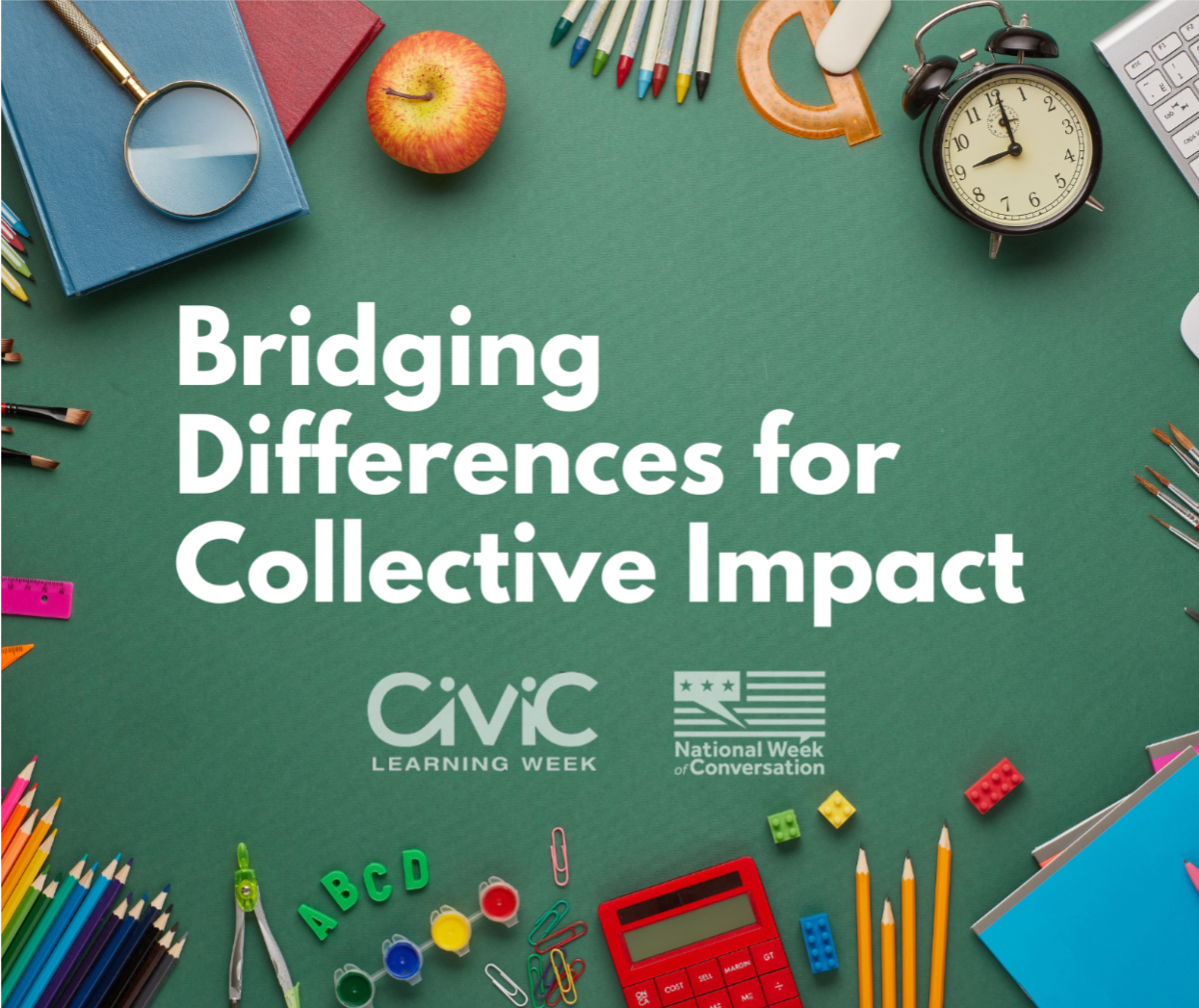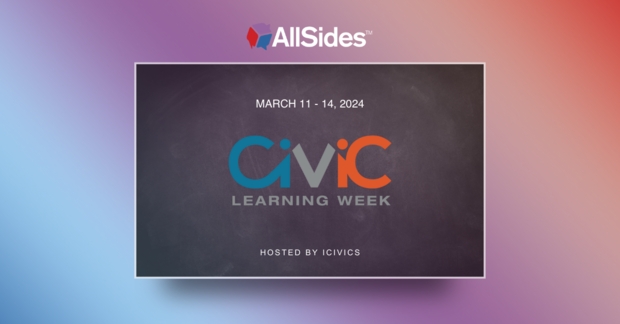Civic Learning Week, hosted annually by our friends at iCivics, “seeks to highlight the importance of civic education in sustaining and strengthening constitutional democracy in the United States.”
AllSides engages students in civic learning through experience. Students can use the AllSides app, balanced news feed, media bias chart, and newsletter to cultivate an understanding that all media is biased — and that’s okay. With practice, students develop skills to recognize bias and seek multiple perspectives.
From March 11-14 we will be sharing Civics Learning resources and tools from AllSides here and on Facebook, X, and Instagram. Follow us there! Whether you are an educator, parent, student or activist you can support civic learning to:
- Empower Young Citizens: Experiential learning equips students with the knowledge, skills, and dispositions to understand their rights and responsibilities, engage in constructive dialogue, and participate effectively in their communities.
- Strengthen our Democratic Society: Engagement is vital for a healthy democratic society. By fostering critical thinking, problem-solving, and collaboration, civic learning helps ensure informed participation in elections, holding leaders accountable, and advocating for change.
- Address Contemporary Challenges: Civic learning empowers students to analyze complex problems, find solutions, and take action. It equips them to be part of the change they want to see in the world.
SAVE THE DATE
Bridging Differences for Collective Impact
March 14th, 2024 | 3PM - 4PM EST

An interactive panel of educators will showcase the interplay between civic engagement, civic learning, and bridging divides and how they bring this to their classrooms. Attendees will have a chance to experience and walk away with concrete resources to try in the classroom. Register here.
Get started with our FREE two-part, teacher-tested lesson on Polarization and Bias. Students will define polarization, identify its causes and consequences, and analyze its relationship to society. Students will then define bias and identify its relationship to polarization. Uses our AllSides Perspective Blog, Red Blue Translator™ and AllStances™.


